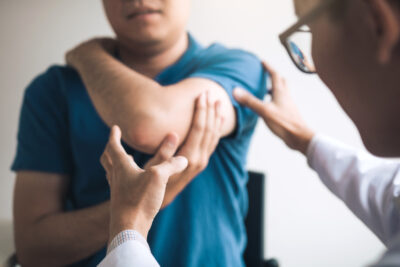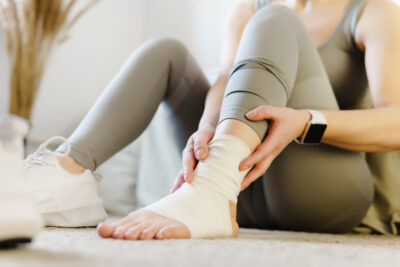The Impact of Childhood Obesity on Joint Health

Obesity In Children
Over the past 20 years, there has been an alarming increase in the number of children and adolescents diagnosed as overweight or obese in the United States. According to the Centers for Disease Control and Prevention (CDC), approximately one-third of American children and adolescents, ages 2 to 19, are considered overweight or obese. An estimated 4.5 million children and adolescents are severely obese. Obesity is thought to be the result of eating too many calories and not getting enough physical activity (too much energy in and too little energy out). However, the actual causes of obesity often are more complex, a combination of genetics, activity level, diet, and the environment in which a child lives and plays. Childhood obesity can have a harmful effect on the body in a variety of ways. Too much weight can seriously impact the growth and health of bones, joints, and muscles. Bones grow in size and strength during childhood. Excess weight can damage the growth plate, the area of developing cartilage tissue at the end of the body’s arm, leg and other long bones. Growth plates regulate and help determine the length and shape of a bone at full growth or maturity. Excessive weight places stress on the growth plate, which can lead to early arthritis, a greater risk for broken bones and other serious musculoskeletal conditions.
Children diagnosed as obese or overweight also have a higher risk for fractures (broken bones) due to stress on the bones because of weakened bones or inactivity. Overweight children may have more complications that can delay or alter treatment outcomes. In most children, a diet rich in calcium and other nutrients, along with regular, physical activity, at least 35 to 60 minutes a day, can help to minimize weight gain, while helping to build and maintain strong bones. Through their campaign To Get Up, Get Out, Get Moving!, the American Academy of Orthopaedic Surgeons (AAOS) helps kids to get active. Or visit letsmove.gov to “step it up” for better health.
How To Get Started
Getting started is the toughest step…
- Plan to be active for 35 minutes each day. This can be broken up into shorter periods. Try 15 minutes of walking and 20 minutes of sports.
- Exercise can be fun. Try sports (like soccer, baseball, and basketball), dancing, step aerobics, swimming, biking, tennis and other racquet sports, skiing, skating, karate, or bowling.
The Centers for Disease Control (CDC) provides helpful suggestions for families to develop healthy eating habits so children can maintain a healthy weight.
- Provide plenty of vegetables, fruits, and whole-grain products.
- Include low-fat or non-fat milk or dairy products.
- Choose lean meats, poultry, fish, lentils, and beans for protein.
- Serve reasonable portions.
- Drink water, not sugary drinks.
- Limit consumption of sugar and saturated fat.
Direct Orthopedic Care (DOC) provides orthopedic urgent access care. The board-certified, orthopedic specialists can provide the highest quality care for children suffering from joint pain or other musculoskeletal conditions associated with obesity.
For more information on the cost of care, click here.




